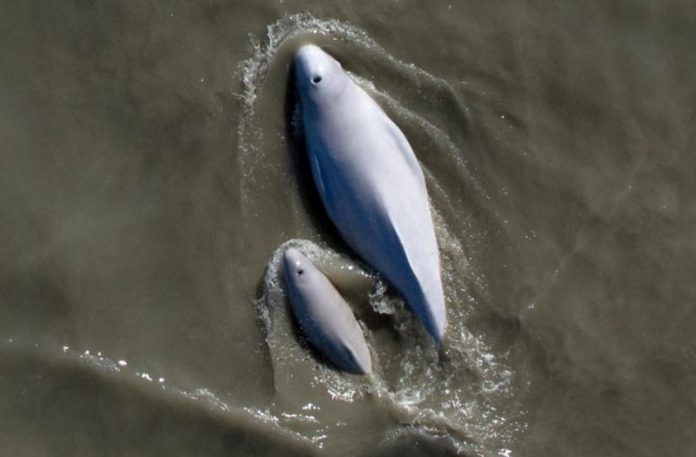Beluga whales are found in seasonally ice-covered waters throughout arctic and sub-arctic regions. In the United States, there are five stocks of beluga whales identified by NOAA Fisheries and all are found in Alaskan waters the Beaufort Sea, Bristol Bay, Cook Inlet, eastern Bering Sea, and eastern Chukchi Sea stocks. These five unique stocks are isolated from one another genetically and/or physically by migration routes and preferred habitats.
Belugas are small whales, measuring up to 15 feet long with a maximum weight of 3,000 pounds. At birth, beluga whales are five feet long, roughly 100 pounds, and dark blue-gray in color. Unmistakable as adults, their color lightens to white, and they have a dorsal ridge rather than a fin. Belugas have ornately curved tail fins, broad, short flippers, and a soft, bulbous head.
Out of these five stocks of beluga whales cook inlet beluga whales population has declined by nearly 80 percent since 1979, from about 1,400 whales to an estimated Nearly 300 whales in 2018. In 2008, Cook Inlet belugas were listed as endangered under the Endangered Species Act (ESA), and still, the numbers continued to drop due many threats including pollution, habitat degradation, predation from killer whales, harassment, interactions with commercial and recreational fisheries, oil and gas exploration, disease, and other types of human disturbance such as underwater noise.
NOAA has an ongoing acoustic monitoring effort to study beluga movements in Cook Inlet and try to explain the decline. The next aerial survey is scheduled for this summer.
Cover Photo – www.ktoo.org
























